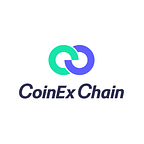CoinEx Smart Chain (CSC) Academy | Understanding the Charm of the dYdX Chain
In the crypto space, the dYdX Chain has recently emerged as a rising star. The dYdX Chain’s Alpha mainnet went live at 13:00 on October 26 (UTC-4), and the genesis block created by validators signaled the official launch of the dYdX Chain as a standalone blockchain. As a top player in the DeFi category, dYdX has seen a major reform with the launch of the dYdX Chain, which enhanced the utility of DYDX in staking, security, and governance. This improvement has also triggered a price surge, with DYDX reaching $2.495 on October 27, a rise of nearly 6% (as shown below).
dYdX’s founder, Antonio Juliano took to Twitter to voice his views on the project’s new blockchain: “The software behind the dYdX Chain has been a massive effort to develop. Building an entire blockchain including significant novel technology in 1.5y is a monumental achievement for which I’m incredibly proud of our team.” That makes people wonder: What exactly is the dYdX Chain? What are its features and advantages? Today, we will go through the essential aspects of the dYdX Chain.
Let’s get started with the basic concept. Built on Cosmos SDK, the dYdX Chain is a blockchain that utilizes Tendermint consensus. It offers full decentralization, an order book, and a matching engine, with the capability to process 2,000 transactions per second, catering to the specific needs of various projects. Trading fees on the dYdX Chain will be denominated in USDC as well as DYDX. The chain’s security incentives will not rely on token inflation, like in other blockchains; instead, the chain will fund validators and stakers by distributing rewards to them through fee collection.
The primary objective of the alpha stage is to subject the network to stress tests, with ongoing efforts to onboard validators in order to enhance the network stability and security. A beta launch is in place, subject to approval from the community governance, which will finally activate live transactions on the network.
Now, let’s take a look at the features and advantages of the dYdX Chain:
High Throughput
Each dYdX Chain validator will run an in-memory order book that is never committed to consensus (i.e., off-chain). Orders placed and cancellations will be propagated through the network similar to normal blockchain transactions, and the order book that each validator stores is eventually consistent with one another. Orders will be matched together by the network in real time, and the resulting trades are then committed on-chain each block. This allows the dYdX Chain to have extremely high throughput for the order book while remaining decentralized.
Bridging
dYdX Chain has deployed a Bridge User Interface that allows anyone to bridge their DYDX tokens from Ethereum to the dYdX chain. By offering a streamlined token swap process, the dYdX Chain encourages more ethDYDX holders to swap their tokens to DYDX, enabling them to better participate in the dYdX ecosystem. Moreover, seamless token swaps are also a crucial step in promoting staking, which will become available in later stages.
Customizability
Built on Cosmos, the dYdX Chain benefits from complete customizability in terms of blockchain functionality and validator tasks. It is a standalone blockchain that can be fine-tuned for specific purposes. This gives builders the freedom to tailor every aspect, ranging from the underlying protocol to the user interface.
Conclusion
The public chain sector has always been a field with fierce competition. In addition to the dYdX Chain, the last couple of years have seen the rise of many new public chains, such as CoinEx Exchange’s CSC (CoinEx Smart Chain), the Move-based Aptos and Sui, and the privacy-focused Aleo blockchain built on ZKP technology. The long list of new entrants, each with its unique features, have shattered the monopoly on the sector held by Ethereum. Besides, the healthy competition among public chains, which constitute the infrastructure of blockchain technology, continues to spark technological advancement, empowering the whole crypto ecosystem. In this fiercely competitive field, public chains must keep improving their technical capabilities to achieve greater success.
